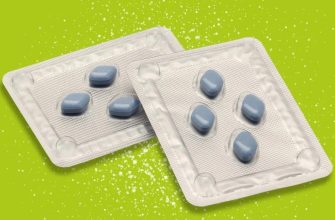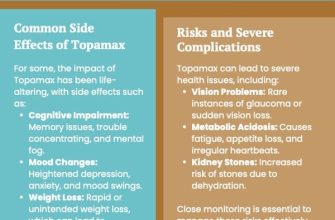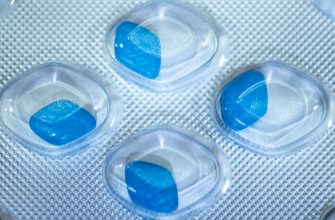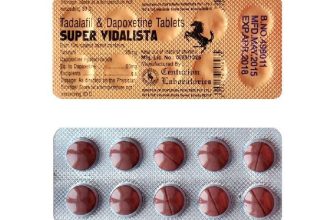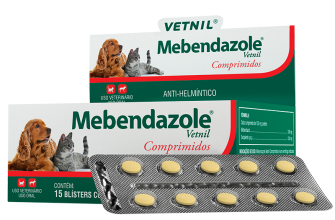Start with a dermatologist consultation. They’ll assess your specific hair loss type and recommend the best course of action, potentially involving Propecia, Minoxidil, or Nizoral, or a combination. Ignoring underlying medical conditions can hinder treatment success; address any health issues first.
Propecia (finasteride) is a prescription medication that blocks DHT, a hormone contributing to hair follicle miniaturization. It’s most effective for men with androgenetic alopecia, exhibiting noticeable improvements within three to six months. Expect some side effects like decreased libido, which usually subside. Consistency is key; discontinue treatment and hair regrowth may reverse.
Minoxidil, a topical solution, stimulates hair growth by widening blood vessels in the scalp. Apply it twice daily to a clean, dry scalp. Results vary, often taking several months to appear. Common side effects include scalp irritation and unwanted hair growth on the face. Persistent application is crucial for maintaining results.
Nizoral (ketoconazole) shampoo, an antifungal agent, can help manage dandruff and seborrheic dermatitis, conditions potentially worsening hair loss. Use it as directed, typically 2-3 times per week. While it might not directly regrow hair, controlling scalp inflammation contributes to a healthier environment for hair follicles.
Remember: These medications work differently, and a combined approach may be more beneficial for some. Always consult your doctor before starting any new medication regimen. Individual responses to these treatments vary significantly. Patience and consistent usage are critical for optimal outcomes.
- Propecia, Minoxidil, and Nizoral: A Comprehensive Guide
- Understanding Hair Loss: Types and Causes
- Propecia (Finasteride): Mechanism, Effectiveness, and Side Effects
- Minoxidil: Topical Application, Results, and Potential Drawbacks
- Results: What to Expect
- Potential Side Effects
- Nizoral (Ketoconazole): Role in Hair Loss Treatment and Potential Benefits
- How Ketoconazole Works
- Combining Nizoral with Other Treatments
- Important Considerations
- Potential Benefits Summary
- Combining Treatments: Synergistic Effects and Potential Interactions
- Choosing the Right Approach: Consulting a Dermatologist
- Assessing Your Hair Loss
- Tailored Treatment Strategies
- Monitoring Progress and Adjustments
- Beyond Medication: Lifestyle Factors
Propecia, Minoxidil, and Nizoral: A Comprehensive Guide
Consult your doctor before starting any hair loss treatment.
These three medications often work together to combat hair loss, each targeting different aspects of the problem. Let’s explore how.
- Finasteride (Propecia): This oral medication inhibits the conversion of testosterone to dihydrotestosterone (DHT), a hormone strongly linked to male pattern baldness. It’s highly effective for many men, but results vary. Side effects, though generally mild, can include decreased libido and erectile dysfunction. Regular blood tests are sometimes recommended.
- Minoxidil: This topical solution is applied directly to the scalp. It’s believed to widen blood vessels, improving blood flow to hair follicles. It comes in different strengths (2% and 5%). While effective for some, results are often gradual and may stop if use ceases. Common side effects include scalp irritation and unwanted hair growth on the face.
- Ketoconazole (Nizoral): This anti-fungal shampoo is sometimes used to treat scalp conditions that might contribute to hair loss, like seborrheic dermatitis. It may have a secondary benefit on hair growth by reducing inflammation.
Many find a combination approach most beneficial. Here’s a possible regimen:
- Daily use of Minoxidil, as directed by your doctor.
- Daily oral intake of Finasteride, as prescribed.
- Weekly use of Nizoral shampoo, following product instructions.
Remember, consistency is key. Results take time, and abandoning treatment prematurely reduces the chance of success. Regular follow-up appointments with your doctor are advisable to monitor progress and adjust treatment as needed. They can also discuss potential side effects and help determine the best approach for your specific needs.
Alternatives exist. Your doctor can explore other treatment options if these aren’t suitable or effective.
Understanding Hair Loss: Types and Causes
Hair loss, medically known as alopecia, presents in various forms. Androgenetic alopecia, the most common type, affects both men and women, leading to gradual thinning on the scalp’s top and crown. This often results from genetic predisposition and hormonal changes. Male pattern baldness typically shows as receding hairline and thinning on top, while female pattern baldness often presents as diffuse thinning across the scalp.
Telogen effluvium is another significant type, characterized by sudden shedding triggered by stress, illness, or major hormonal shifts like childbirth. Unlike androgenetic alopecia, telogen effluvium is temporary; hair growth usually resumes once the underlying cause is addressed. Alopecia areata, an autoimmune disorder, causes patchy hair loss, sometimes progressing to complete hair loss (alopecia totalis) or even loss of all body hair (alopecia universalis).
Several factors contribute to hair loss. Genetics play a crucial role, particularly in androgenetic alopecia. Hormonal imbalances, often involving androgens like DHT, influence hair follicle miniaturization. Nutritional deficiencies, particularly iron, zinc, and protein, can impact hair growth. Medical conditions like thyroid disorders and certain autoimmune diseases also frequently lead to hair loss. Stress, medications, and even aggressive hairstyling can contribute to temporary hair shedding.
Identifying the specific cause is key to selecting the right treatment. Consulting a dermatologist or trichologist is recommended. They can diagnose the type of hair loss and identify potential underlying medical issues, enabling personalized treatment plans. Early intervention can maximize the chances of successful management or hair restoration.
Propecia (Finasteride): Mechanism, Effectiveness, and Side Effects
Finasteride works by inhibiting the enzyme 5-alpha-reductase, which converts testosterone to dihydrotestosterone (DHT). High DHT levels contribute significantly to hair loss in men with androgenetic alopecia. By reducing DHT, Finasteride slows hair loss and may even promote regrowth.
Studies show Finasteride is highly effective for many men. A significant percentage experience noticeable hair regrowth and reduced shedding within six to twelve months of consistent use. However, results vary, and not everyone responds the same way. Continued use is generally necessary to maintain results. Stopping treatment often leads to hair loss resuming.
Common side effects include decreased libido, erectile dysfunction, and ejaculation problems. These typically occur in a small percentage of users and are often mild. Serious side effects are rare, but potential concerns include breast tenderness or enlargement. Consult a doctor immediately if you experience any concerning side effects.
Important Note: Finasteride is a prescription medication. Discuss your hair loss and medical history with your doctor before starting treatment. They can assess your suitability for Finasteride and monitor for potential side effects.
Remember: This information is for educational purposes and not a substitute for professional medical advice. Always consult a healthcare professional for personalized guidance.
Minoxidil: Topical Application, Results, and Potential Drawbacks
Apply Minoxidil twice daily to a clean, dry scalp. Use the recommended dosage; more isn’t better. Focus on the affected areas, gently massaging it in.
Results: What to Expect
Hair regrowth, if it occurs, usually starts after several months of consistent use. Expect gradual improvement, not overnight miracles. Results vary significantly; some see substantial regrowth, others minimal. Maintaining use is crucial for continued benefit; stopping often leads to hair loss reversal. You should consult your doctor for realistic expectations based on your specific condition.
Potential Side Effects
Common side effects include scalp irritation, itching, and dryness. These are usually mild and temporary. More serious, though rare, side effects can include chest pain, rapid heartbeat, and dizziness. Stop using and seek immediate medical attention if you experience these symptoms. Some users experience unwanted hair growth in other areas. Discuss potential side effects with your doctor before starting treatment.
Nizoral (Ketoconazole): Role in Hair Loss Treatment and Potential Benefits
Nizoral shampoo, containing ketoconazole, combats hair loss by targeting a common culprit: dandruff (seborrheic dermatitis). This fungal infection often accompanies androgenetic alopecia (male/female pattern baldness), exacerbating hair follicle inflammation and potentially hindering hair growth. By controlling dandruff, Nizoral helps create a healthier scalp environment, potentially promoting better hair growth.
How Ketoconazole Works
Ketoconazole’s antifungal properties directly attack Malassezia globosa, the yeast responsible for seborrheic dermatitis. Reducing yeast levels lessens inflammation, promoting a healthier scalp. Studies suggest this anti-inflammatory effect may play a significant role in improving hair growth, though it’s not a cure for baldness.
Combining Nizoral with Other Treatments
Nizoral often works best as part of a comprehensive hair loss management strategy. Combining it with minoxidil (a topical vasodilator that stimulates hair follicles) and/or Propecia (finasteride, an oral medication that blocks DHT, a hormone linked to hair loss) may yield better results than using Nizoral alone. Always consult a dermatologist to create a personalized treatment plan.
Important Considerations
Results vary. While Nizoral can benefit some individuals, others may not see significant changes in hair growth. Consistency is key; use it as directed. Side effects are rare but can include scalp irritation. Discontinue use and consult a doctor if irritation occurs. It’s not a standalone solution for significant hair loss. It’s most effective when integrated into a broader treatment approach guided by a medical professional. Always seek professional advice before starting any new medication or treatment.
Potential Benefits Summary
Nizoral’s benefits stem from its ability to control dandruff and reduce scalp inflammation. This creates a healthier environment for hair growth, potentially enhancing the effects of other hair loss treatments. However, realistic expectations are vital; Nizoral is a supportive therapy, not a miracle cure.
Combining Treatments: Synergistic Effects and Potential Interactions
Combining Propecia (finasteride), minoxidil, and Nizoral (ketoconazole) can offer enhanced hair growth results for some individuals. However, understanding potential interactions is crucial.
Minoxidil and finasteride often work synergistically. Finasteride reduces DHT, a hormone contributing to hair loss, while minoxidil stimulates hair follicle growth. Using them together may lead to better outcomes than using either alone. However, this isn’t guaranteed for everyone.
Nizoral, an anti-fungal shampoo containing ketoconazole, can also help. Ketoconazole exhibits anti-androgenic properties, meaning it can also reduce DHT levels, potentially complementing finasteride. It might also address scalp inflammation, a factor influencing hair loss.
However, combining these treatments requires caution. Some individuals may experience side effects like scalp irritation or increased sensitivity. Always discuss this combination with a dermatologist or healthcare professional before starting.
| Combination | Potential Synergistic Effect | Potential Interactions/Side Effects |
|---|---|---|
| Finasteride + Minoxidil | Increased hair growth | Scalp irritation, sexual side effects (finasteride) |
| Minoxidil + Ketoconazole | Improved hair growth, reduced inflammation | Increased scalp dryness or irritation |
| Finasteride + Ketoconazole | Enhanced DHT reduction | Increased risk of liver enzyme elevation (rare) |
| Finasteride + Minoxidil + Ketoconazole | Potentially maximized hair growth | Increased risk of combined side effects; requires close monitoring |
Your doctor can assess your individual needs and determine the best approach. They can monitor for any adverse reactions and adjust the treatment plan as necessary. Regular check-ups are recommended when using multiple hair loss treatments.
Choosing the Right Approach: Consulting a Dermatologist
Schedule a consultation. A dermatologist offers personalized treatment plans, considering your unique hair loss pattern, medical history, and potential drug interactions.
Assessing Your Hair Loss
Dermatologists use tools like trichoscopy to examine your scalp and hair follicles closely. This detailed examination helps determine the type of hair loss (e.g., androgenetic alopecia) and its severity. They’ll discuss potential underlying causes, such as hormonal imbalances or nutritional deficiencies.
Tailored Treatment Strategies
Based on the assessment, your dermatologist can create a customized plan. This might include Propecia (finasteride), minoxidil, Nizoral (ketoconazole shampoo), or a combination therapy. They’ll explain the benefits, risks, and potential side effects of each treatment option, allowing you to make informed decisions.
Monitoring Progress and Adjustments
Regular follow-up appointments are crucial. Your dermatologist will track your progress, adjust your treatment plan as needed, and address any concerns. They can modify dosages, introduce additional therapies, or suggest lifestyle changes to support hair growth.
Beyond Medication: Lifestyle Factors
Your dermatologist may advise on lifestyle changes that positively influence hair health. These can include dietary adjustments, stress management techniques, and scalp care routines. They might also screen for any underlying medical conditions that could contribute to hair loss.



